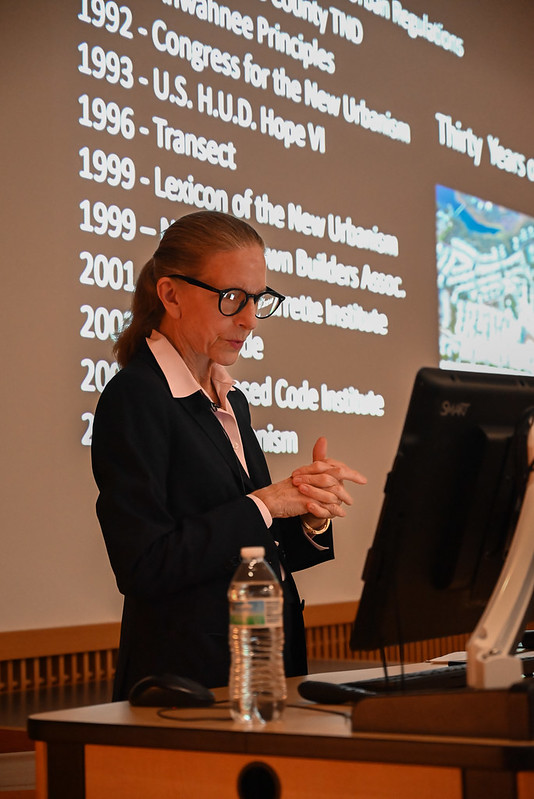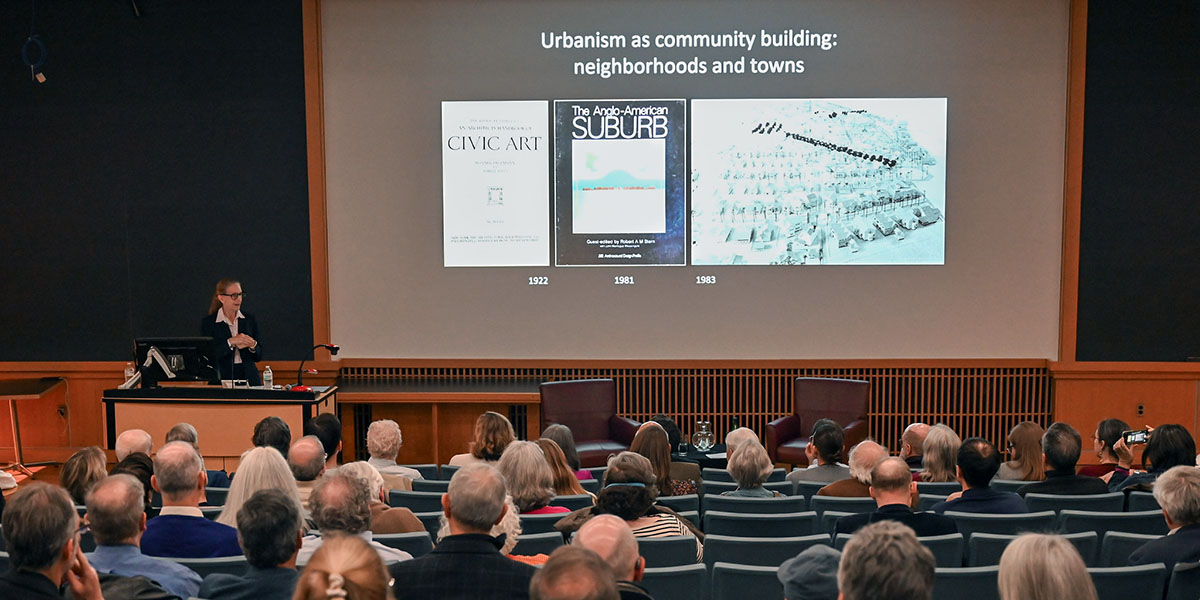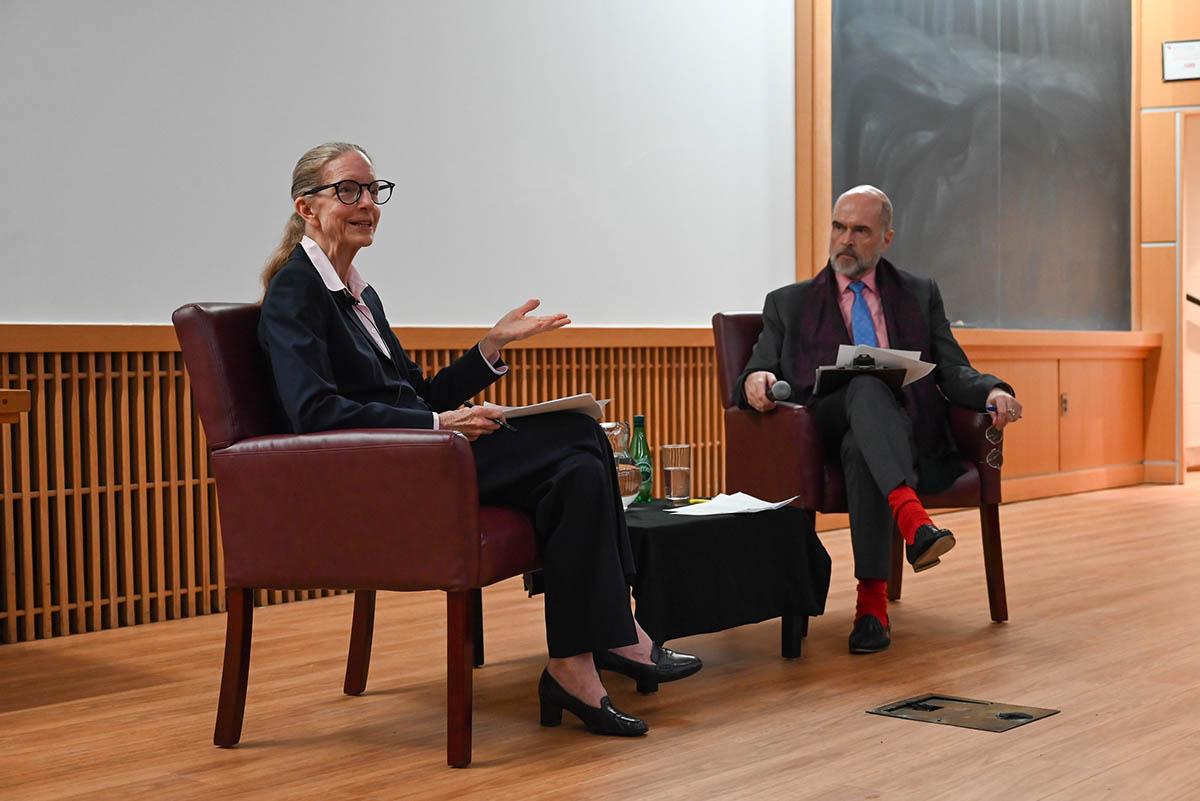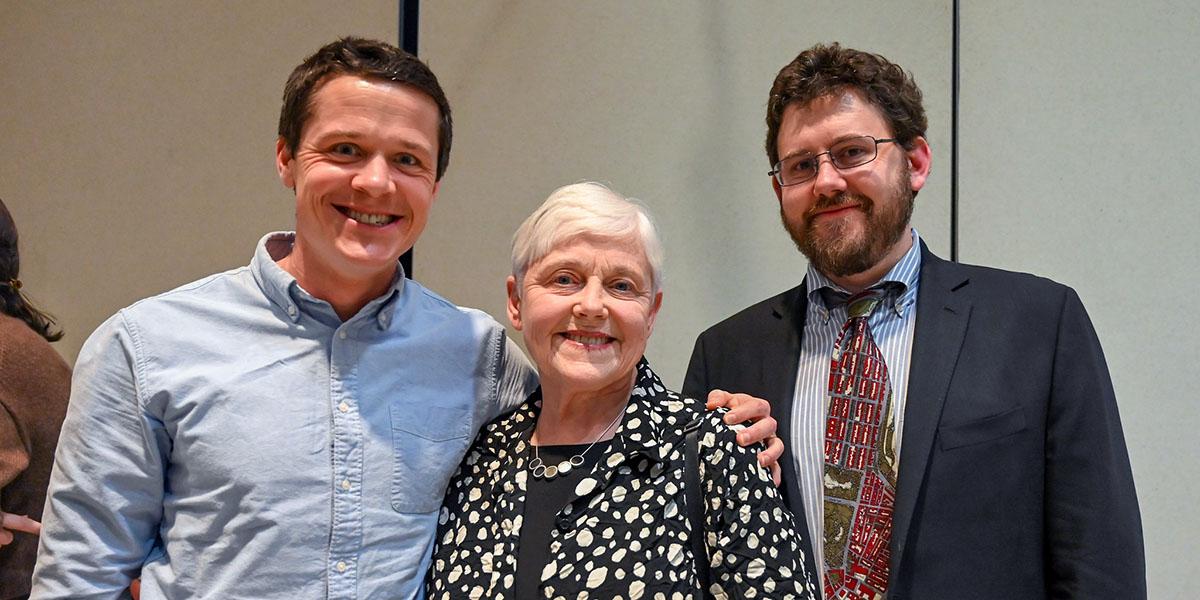 To understand how COVID-19 might impact the future of the built environment, Elizabeth Plater-Zyberk, FAIA, looked 100 years into the past: to the Spanish Flu. Her research with colleagues at the University of Miami, where she is a Malcolm Matheson Distinguished Professor of Architecture and director of the Master of Urban Design Program, found that the 1918 outbreak brought people to Florida in the first part of the 20th century, spurring early modern architecture.
To understand how COVID-19 might impact the future of the built environment, Elizabeth Plater-Zyberk, FAIA, looked 100 years into the past: to the Spanish Flu. Her research with colleagues at the University of Miami, where she is a Malcolm Matheson Distinguished Professor of Architecture and director of the Master of Urban Design Program, found that the 1918 outbreak brought people to Florida in the first part of the 20th century, spurring early modern architecture.
A partner at Duany Plater-Zyberk CoDesign and co-founder of The Congress for the New Urbanism, Plater-Zyberk shared how disruptions like a worldwide pandemic, technology and climate change are impacting building and design in a discussion with architecture Professor Brian Kelly for the inaugural Karl F.G. Du Puy Lecture in Urban Design on March 1.
"Elizabeth Plater-Zyberk was the natural choice for the first lecture in memory of Professor Karl F. G. DuPuy because she was responsible for changing the discourse and practice of urbanism in our lifetimes,” Kelly said. “Through her work at Duany Plater-Zyberk, in the Congress of the New Urbanism, and as Dean of the University of Miami's School of Architecture, Lizz had a tremendous impact on how we think, imagine and build cities as liveable, sustainable and inclusive places."
The lecture is named after beloved architecture Professor Emeritus Karl F.G. Du Puy, who taught for the University of Maryland’s architecture program for over 40 years. Du Puy's family decided to honor his legacy through the annual lecture after he passed away in 2020. Established in 2021, the lecture focuses on urban design theory and urban design issues and how it will inform future built environment professionals about their responsibility to the city.
Here are five takeaways from Kelly’s conversation with Plater-Zyberk on the future of urban architecture:
Two significant disruptions—COVID-19 and technology—have played a major role in shaping the future of architecture. COVID-19 and new technologies, such as electric cars, continue to change the landscape of architecture and can even replace behavioral change, said Plater-Zyberk. But in some cases, particularly as the built environment catches up, both components could work together.
"I think even the urbanists will acknowledge that giving everyone an electric vehicle would reduce emissions faster than we can change urbanism to be walkable and transit-oriented," she said. “[But] you can have an electric car and drive less."
Global climate change—and an investor-driven market—are poised to negatively impact underserved areas and affordable housing. Difficult choices will arise about how money is spent to defend places and preserve housing and land in the wake of climate change, said Plater-Zyberk. She believes that architects and designers should drive the policies, solutions and advocacy that ensure dignified housing for all, which will influence financial investments.
“We're no longer making places for the market of the user, places are being made by the market of the investors,” she said. “The housing future is critical to our time because the designers can only work within that larger context of finance and the policies that would promote spending money on housing.”

Meshing nature and the built form is a part of the new urbanism. Architects and environmentalists thought there needed to be an urban boundary between the built environment and nature in the ‘80s and ‘90s, said Plater-Zyberk, but her team realized it was more nuanced. The interface between nature, people and buildings, she said, is very much part of the new urbanism, but an approach must be created to foster a more ecological equilibrium.
“We're balancing the needs of the natural environment and the human one and imagining how those two can work better together,” she said.
The concept and future of new urbanism are evolving. In response to Carl Elefante’s (B.ARCH' 80) comment that buildings today are either infill or adapted, Plater-Zyberk was candid about the future of new urbanism when, in retrospect, it’s a misnomer. Beyond a handful of individuals working on policy issues, the movement must collectively face new problems and ones they haven’t addressed before—and prepare the next generation of designers for enduring challenges, such as climate change, equity, inclusion and wealth building.
“We have a lot of techniques and measures. We don't have that much data, but we have observations, and so what do young people do?,” Plater-Zyberk said. “Do they just have to learn what we know, and that's all there is to it? The next generation is not interested in just repeating what we've been doing. How do you take the advances that have been made and carry them into the next thing?”
Proposing change in the field of architecture takes time and planning. Plater-Zyberk believes that a person has to hear an idea five times before they'll accept it. Creating an example is one of the most important steps for people to experience and judge the idea. She pointed to development projects that bravely pushed the envelope over many years, and whose success spurred change.
“The people who do the heavy lifting are the people who bring those tricky things like finance to bear on making places,” Plater-Zyberk said. “The developers who we would prefer to call town founders, who devote a lifetime to one project to make it as good as it can be and to engage multiple builders and homeowners–who can be a real pain in the neck–make these places happen and are the real change agents.”


